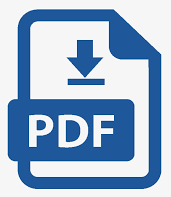Indicación de antibacterianos de reserva en el Hospital Docente Pediátrico Provincial Eliseo Noel Caamaño. Matanzas, 2015
Palabras clave:
antibióticos de reserva, resistencia antimicrobiana, aislamiento de microorganismos a nivel hospitalario.Resumen
Introducción: la resistencia de las bacterias a las drogas antimicrobianas es un fenómeno natural que se ha convertido en un problema mundial emergente. La Organización Mundial de la Salud ha declarado la resistencia a los antimicrobianos como una enfermedad. En la categoría de antibacterianos existe un tercer grupo, los agentes antibacterianos de reserva, los medicamentos de este grupo no tienen alternativas terapéuticas y su uso se limita a reducir el riesgo de aparición de resistencia.Objetivo: se realizó un estudio descriptivo, transversal sobre el uso de antibacterianos de reserva y la resistencia.
Materiales y Métodos: se realizó un estudio descriptivo, transversal, durante el período enero a diciembre de 2015 a partir de los criterios normados en el Manual de Políticas de Antibióticos de la institución. La población de estudio estuvo constituida por todas las historias clínicas obtenidas del registro de uso de antibacterianos de reserva. Se incluyó en el estudio los microorganismos aislados en el periodo de estudio y la susceptibilidad /resistencia de los mismos a los antimicrobianos de reserva.
Resultados: se puso en evidencia que los microorganismos con más frecuencia aislados fueron el estafilococo aureus y la echerichia coli.
Conclusiones: se encontró en la amoxicilina+sulbactam los mayores patrones de resistencia, siendo más llamativo frente a la echerichia coli y en menor medida frente al estafilococo aureus. El cefepime mostró alta resistencia a ambos microorganismos. El uso de antibióticos de reserva puede ser considerado adecuado en la institución donde se realizó el trabajo.
Descargas
Publicado
Cómo citar
Número
Sección
Licencia
La misma permite:
• Copiar y redistribuir el material publicado en cualquier medio o formato.
• Adaptar el contenido.
Esto se realizará bajo los siguientes términos:
• Atribuir los créditos de los autores e indicar si se realizaron cambios, en cuyo caso debe ser de forma razonable.
• Uso no comercial.
• Reconocer la revista donde se publica.
Se mantienen los derechos de autoría de cada artículo, sin restricciones.






